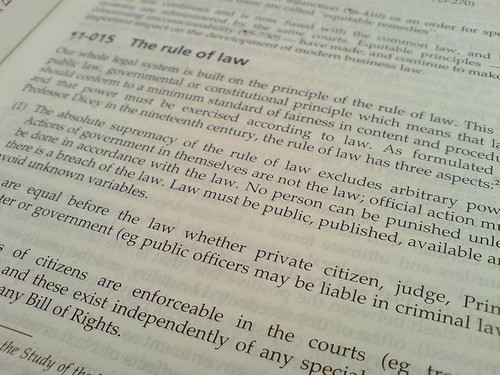
(Photo Source: thomashawk)
Applying to law school can be an expensive proposition. This is why it is important to make sure that your law school application and supporting documents are perfect the first time around. If you have any doubts about your personal statement, resume, or any other document, please consider using our law school application editing services so that you do not have to incur additional fees when reapplying to law school.
LSAT: $160
The Law School Admission Test is required by almost every reputable law school. The LSAT consists of five 35-minute sections of multiple-choice questions. These sections include two logical reasoning sections, one logic games section, one reading comprehension section, and one experimental section.
Additional LSAT fees include late registration, changing your testing center, and handscoring. Fees also vary slightly for Canadian test takers.
If you want to simulate test day during every practice LSAT test, you should consider purchasing the SimuGator LSAT Proctor DVD from our sister company.
Credential Assembly Service: $155
LSAC’s Credential Assembly Service (CAS) is required or recommended by almost every law school.
This is an extremely helpful service that simplifies the application process. It allows you to submit your school transcripts and letters of recommendation directly to LSAC, which processes them into one comprehensive report that you can then submit to each law school. In other words, you submit documents to LSAC once instead of submitting them multiple times to each separate law school.
CAS has electronic versions of every law school application. It populates application fields with your name, address, and other information so you do not have to retype this redundant information. It also allows you to upload application documents for each law school, including your personal statement, resume, addenda, or any other document you need to submit.
Transcript Request: varies per institution
For each academic institution you have attended, you will need to have your transcript sent to LSAC’s CAS. This is usually a nominal fee for processing and mailing, but you should check with each University or institution for more information.
Law School Reports: $21 per school
CAS takes your transcripts, letters of recommendation, and LSAT score and generates a report that is submitted directly to each law school to which you apply. This, unfortunately, costs $21 for each law school. Therefore, if you apply to ten law schools, this will cost you $210.
Individual Law School Application Fees: $0 to $100 per school
In addition to law school reports, each law school may charge an application fee. The amount varies per school. Some applications may be free, and others might cost $70 or even $100.
Sometimes schools will contact you after receiving your LSAT score through LSAC’s Candidate Referral Service to offer you an application fee waiver. This is usually done to recruit competitive candidates. You may also receive a “hidden waiver,” which occurs when an application fee is waived, but you do not discover this until you are ready to submit your application. You can also contact each law school before you submit your application to ask whether they will grant you an application waiver based on your LSDAS GPA and LSAT score.
Getting an Offer of Admission: Priceless
There is no doubt that getting into law school is a difficult process. However, there is no greater feeling than being accepted and knowing that you are about to embark on a new and incredible journey towards the career of your dreams.










